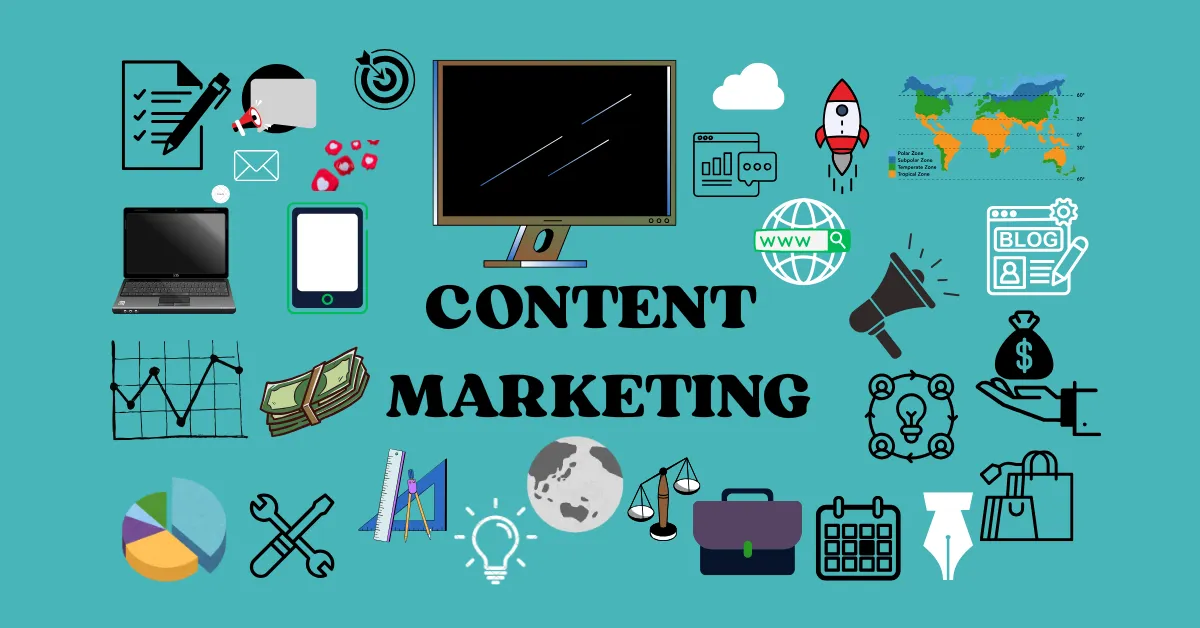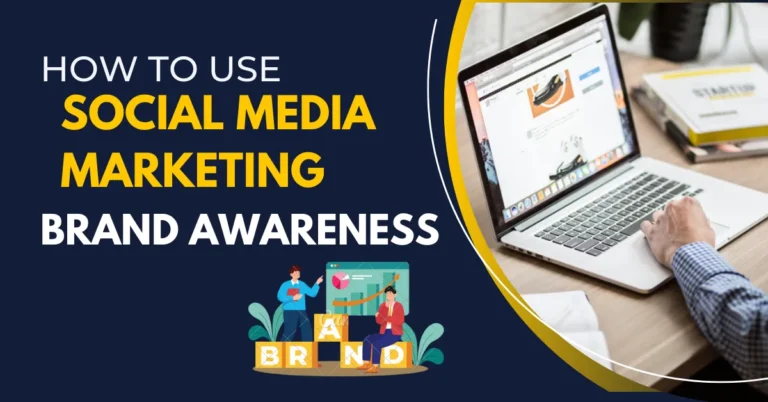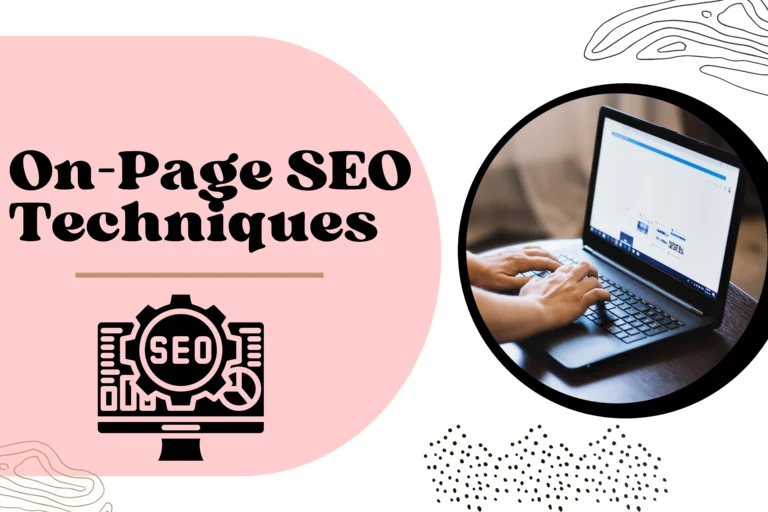- What Is Content Marketing?
- Why content marketing is the backbone of SEO
- Key Benefits of Content Marketing for SEO
- How to adjust your content marketing with an SEO strategy
- Common content marketing mistakes that hurt SEO
- Case Study: How "Luna Skin Care" tripled its organic traffic with content marketing
- How to measure the success of content marketing in SEO
- Conclusion:
Content marketing is everywhere—but is it helping your business grow?
Imagine this: You have spent months designing a smooth website. It looks amazing. Your products or services are at the top. You are confident that customers will come in. No click. No traffic. No conversion. When it hits you, if people cannot find you, they cannot buy from you.
This is the place where there is a powerful relationship between content marketing and your SEO strategy. Simply put, content marketing is how you connect with your audience. SEO is how Google decides whether your content is to be shown to the world. When you both use it together, you attract people, create confidence, and continuously increase your brand.
Too often, businesses treat SEOs like a checklist—some affect keywords, some make backlinks, and hope for the best. But from 2025 and further, SEO without high-quality content is like a car without fuel. Google wants to rank auxiliary, relevant, and attractive material, and it is what a content marketing strategy provides.
In this blog, we will educate you on how the content fuels SEO, guide you through step-by-step strategies, and empower you to use the material to run real digital development. Whether you are the master of a small company or a marketing professional, this guide will show you how to create an SEO game plan that works and is built on value.
Let’s unlock the real power of content marketing in your SEO strategy.
What Is Content Marketing?
Content marketing is simply the art of communicating with your followership without directly dealing. Rather than crying “Buy now!”—you are erecting trust by participating in useful or inspiring information that people want to consume.
Suppose about it like this. When you Google “how to fix a leaking gate” and find a helpful blog from a plumbing company, that’s content marketing in effect. They didn’t run a television announcement. They earned your attention by working on a real problem. Later, when you need a plumber, guess who you’ll call?
Unlike traditional marketing, which interrupts people, content marketing invites them in. It’s about value-driven content that helps or entertains. Rather than pushing products, it builds connections.
Traditional marketing is a one-way road: brand → customer. But content marketing is a two-way conversation. It engages and listens to its audience.
When correct, this approach not only increases visibility but also makes a permanent brand loyalty. And most importantly, it gives your SEO strategy fuel by providing fresh, relevant, keyword-rich materials that Google loves.
Want to explore the formal description? The Content Marketing Institute defines it as “ a strategic marketing approach concentrated on creating and distributing valuable and helpful content to attract and retain a real human experience. ”
So, content marketing isn’t just writing blogs; it’s structuring meaningful connections that drive long-term business success.

Why content marketing is the backbone of SEO
If SEO is the engine that strengthens the visibility of your website, content marketing is the fuel that keeps it on.
You may have the most technically right site in the world, but without high-quality, valuable materials, your ranking is thin. Search engines such as Google prefer pages that answer questions, match the intention of the search, and provide a satisfactory experience. This is what content marketing is.
When you publish auxiliary blogs, videos, guides, and infographics, you give more reasons to the search engine to index. HubSpot reports that blog websites have 434% more indexed pages than those without. More pages are more likely to rank.
It’s not acceptable to just publish lots of content—it has to be high-quality and utilize smart keywords. When your content attracts what people are looking for. It helps enhance your Google rankings and click-through rate (CTR).
And do not forget the content freshness. Google loves updated content. This is why publishing new or fresh blog posts regularly is a main part of any winning SEO strategy. The fresh content indicates that your site is active, relevant, and showing users.
Sites (like Moz) highlight that content marketing is significant not just for boosting.
Key Benefits of Content Marketing for SEO
Done right, content marketing not only fills your blog—it works hard behind the scenes to support your entire SEO strategy. Let’s break down how:
Increases organic traffic
Imagine bakeries that write weekly recipes and baking tips. Over time, these articles begin to rank and draw in local and national readers. It is the power of content marketing—it even runs organic traffic without paid ads.
Builds backlinks naturally
High-quality content attracts attention. Think of a thorough guide quoted by other blogs or media. These are natural backlinks—one of Google’s top ranking factors.
Increases the residence time
Let’s say your blog answers the reader’s questions and connects them to a related video. They stay longer, which increases your stay and signals Google that your content is valuable. More time = better SEO performance.
The target of long-tailed keywords
Instead of just “SEO tips,” your blog might target “SEO tips for small eCommerce businesses in 2025.” These long-tail keywords have less competition and higher intensity, which means simpler rankings and better potential customers.
Encourages social sharing
Engaging, useful content—as a checklist or infographic—is shared on social platforms. This reinforces your reach and brings new visitors who can become customers.
Supports subject clusters and internal links
Organizing blogs in column pages, common questions, and related topics builds strong internal links. This helps search engines understand your site structure and the ranking of your site.
How to adjust your content marketing with an SEO strategy
Making content just because it won’t get anywhere. To really expand your traffic, your content marketing must match your SEO strategy. Follow this practical, complete plan to ensure that each piece you publish moves the needle.
Understand the audience.
Before writing a simple word, you need to know who you write for and what they are looking for. Do they look for how-to guides, comparisons of products, or expert insight?
Use these tools to uncover intention and interests:
- Google Trends: Discover what is trending.
- Answer the Public: Find questions real users ask
- Semrush: Analyze competitors and keyword intention
Understanding the audience ensures that your content is relevant, useful, and built to rank.
Perform semantic keyword research.
Gone are the days of filling in one keyword in each section. Now it’s all about matching the search intention with semantic relevance.
Focus on:
- Keywords for long tail: e.g., “Best content marketing tools for small businesses”
- LSI Keywords: Related Sentences, Google links to your topic
- Keyword mapping: Match topics to the buyer journey.
This created a strong structure for both content marketing and your SEO strategy.
Make Valued Content (not just for Google)
Don’t write just to please search engines. Make content that solves problems, tells stories, and makes people care.
Tips to add fair value:
- Begin with a relatively short story or pain point.
- Offer action-rich solutions.
- Use a clear format (headlines, points, short paragraphs)
Includes visual content that
- How-to-pictures
- Explanatory videos
- Infographic
Remember: Google rewards useful content, but users share content that feels human.
Optimize On-Page SEO Elements:
Once your content is written, it’s time to fine-tune the technical side—this is where on-page SEO comes into play. By optimizing specific elements on your page, you help search engines understand your content better and improve its chances of ranking.
Focus on:
- Title marks: Bring your main keyword naturally
- Meta descriptions: Write a convincing summary with a CTA
- URL structure: Keep it pure and keyword-rich (e.g., /content-market-seo-strategy).
- Header Tags (H1 – H6): Organize your content for readability
- All -Text for Photos: Describe each image with relevant keywords
Each of these items tells Google what your content is about—and helps increase the ranking.
Use internal coupling to increase the structure.
Internal links not only improve navigation but also distribute the SEO value of your site. Think of those who guide visitors (and Google) through your content.
How to Search:
- Link to related blog posts, product pages, or column content
- Use descriptive anchor text (“click here”)
- Keep links related to the readers’ journey.
This improves the user experience and strengthens content marketing architecture.
Update the content regularly.
Google values content freshness. Updating existing posts keeps your site relevant and competitive.
What to update:
- Change old data or equipment.
- Add new sections or FAQs depending on recent trends.
- Improve keyword placements for better discovery intention targeting.
- Refresh headlines and meta details.
A small update can revive the old content and re-increase your ranking, making it a strong part of your ongoing SEO strategy.
Common content marketing mistakes that hurt SEO
Even the best content marketing intentions can strike back if you are not careful. Here are some common errors, like silently sabotaging your SEO strategy, and more importantly, how to fix them.
Stuffing of keywords
Example: the phrase “best SEO tools” 15 times in a 500-word article makes it unreadable.
Why it hurts: Google sees it as a way to punish your ranking.
Fix: Focus on keyword optimization, not overload. Use natural variations and semantic keywords to keep the content readable and relevant.
Thin or duplicate content
Example: Publishing a 200-word product page that is almost identical to your rival’s.
Why it hurts: Search engines can ignore your page or label it as duplicate content.
Fix: Make original, value-rich content. Add common questions, use cases, or videos to make it unusual.
Missing user experience
Example: Giant walls of text without headlines, pictures, or distance.
Why it hurts: Poor UX increases the pullback rate.
Fix: Break up content with headings, images, and clear formatting. Make it searchable and phone-friendly.
No clear CTA (call to Action)
Example: You wrote a great blog, but didn’t tell readers what to do next.
Why it hurts: You lose aspiring customers.
Fix: Add a strong CTA that says “get a free revision” or “download the checklist” at the end of each post.
Don’t promote content.
Example: Publishing a blog and assuming people will find it on Google.
Why it hurts: Without traffic, even great content will not rank.
Fix: Promote on social media, via e-mail bulletin, and in online communities. A boost drives visibility and feedback.
Case Study: How “Luna Skin Care” tripled its organic traffic with content marketing
Before:
Luna Skincare, a small e-commerce brand based in California, had a beautifully designed website, but hardly any traffic. Despite the consumption of ads, they did not build long-term visibility. Their biggest problem? They had no blog, no content strategy.
The process:
With the help of a freelance SEO specialist, they begin content marketing operations targeted at long-tail keywords (such as “natural dry skin”).
They utilized tools, published weekly blogs, and created internal links between product and article pages.
They also shared their blog posts via email and Instagram stories to run preliminary engagement.
After (3 months):
Their organic traffic increased by 280%, and five of their blog posts ranked on Google’s first page. Sales from blog readers improved by 40%.
“We thought only paid ads could grow traffic, but the content changed everything. Now we get sales daily from people who found us on Google.”
Lesson:
With the right content marketing tactics and tools, even small brands can create consistent growth through a planned SEO strategy.
How to measure the success of content marketing in SEO
Making it with content marketing does not happen instantly—it is a marathon, not a sprint. To track your progress, focus on KPIs that reflect your real SEO growth.
Start with organic traffic—how many people visit your site from search engines? So, look at your ranking positions for target keywords. Are they moving up?
Other important KPIs include:
Bounce rate (live visitors or go quickly?)
CTR (are people clicking on your links in the search results?)
Conversion rate (becoming visiting clients or customers?)
Utilized tools like Google Analytics, Google Search Console, and Ahrefs to measure these calculations.
Track improvements monthly, not daily. Even a 5% increase in traffic or ranking each month means that your SEO strategy works, driven by consistent, strategic content marketing.
Conclusion:
In today’s digital landscape, content marketing isn’t simply desirable. It’s the center of a winning SEO strategy. From creating accepted truths with authority to attracting certified traffic and boosting conversions.
Remember, SEO isn’t just about a pleasing method—it’s about supporting people. And that begins with content that educates and engages. Whether you’re writing blog posts or creating infographics, each piece should be created with search intent, keyword optimization, and user experience in mind.
If you want long-term digital growth, assume more than one-time fixes. Instead, decide on a consistent, human-first content material plan that supports your SEO desires month after month.
“The more beneficial your content, the more powerful your SEO.”
So, are you prepared to fuel your web page with strategic content? If you need assistance developing a smart, powerful content marketing and SEO method, Boost Zonic is right here to assist.
Let your content material give you the results you want—and watch your ratings, site visitors, and income develop.







